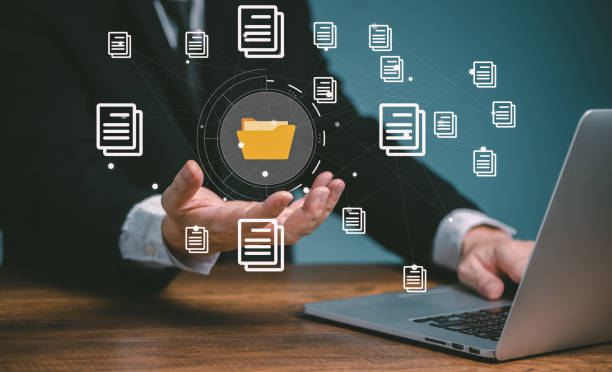Introduction to the Importance of Secure Website Design in the Digital World

In the current era, where websites have become the pulsating heart of businesses and communications, the concept of #security has become more important than ever.
#Secure_Website_Design is not merely an option, but an undeniable necessity.
Imagine you have a website that hosts thousands of visitors and financial transactions daily; if this site is vulnerable to cyberattacks, it can quickly lead to loss of reputation, customer data, and irreparable financial damages.
This explanatory and educational section helps you better understand why secure website design is important.
Web security goes beyond installing a firewall or an SSL certificate; it’s a comprehensive approach that must be considered from the very beginning of the website development process.
Failure to pay attention to this issue can lead to sensitive data breaches, malware attacks, data corruption, and even complete service disruption.
Protecting your website means protecting the future of your business and your users’ trust.
Does your company’s website perform as befits your brand? In today’s competitive world, your website is your most important online tool. Rasawab, a specialist in professional corporate website design, helps you to:
✅ Attract customer credibility and trust
✅ Convert website visitors into customers
⚡ Get free consultation!
Common Web Vulnerabilities and How to Identify Them
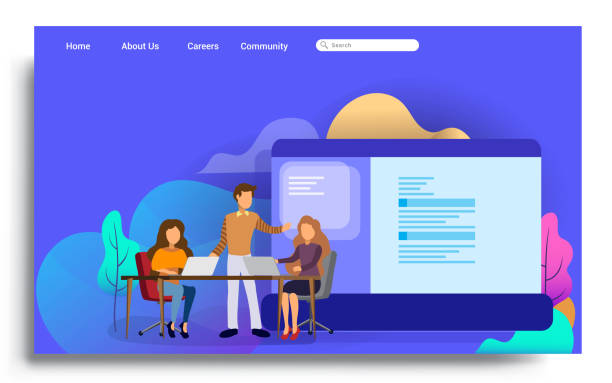
To correctly implement secure website design, we must first become familiar with our enemies, namely common web vulnerabilities.
This specialized and analytical section delves into the deepest and most common weaknesses in web systems that hackers exploit.
These vulnerabilities include SQL Injection, Cross-Site Scripting (XSS), Cross-Site Request Forgery (CSRF), and issues in Session Management.
OWASP Top 10 is an excellent resource for understanding these risks that every developer and website owner should be familiar with.
Identifying these vulnerabilities requires web security analysis tools, vulnerability scanners, and periodic penetration testing.
Failure to identify and address these weaknesses in a timely manner can lead to widespread exploitation, not only endangering your data but also causing irreparable damage to your brand’s reputation.
A deep understanding of these vulnerabilities is the first step towards secure web development.
Secure Coding Principles: A Comprehensive Guide for Developers

Secure website design begins from the moment the first line of code is written.
This guiding and specialized section addresses the most important secure coding principles that every developer must observe.
From precise user input validation (Input Validation) to using strong hashing functions for passwords and preventing code injection, each of these principles plays a key role in building a secure website.
Failure to adhere to these can open backdoors for intruders.
For example, always check user inputs for type, length, and content to prevent injection attacks.
Using Prepared Statements in the database to prevent SQL Injection is a prime example of this approach.
Also, you must adhere to the Principle of Least Privilege; that is, grant only the necessary permissions to each part of the application and each user for their respective tasks.
W3C Security provides useful resources in this area.
| Secure Approach | Insecure Approach (Avoid) | Explanation |
|---|---|---|
| User Input Validation on Server and Client Side | Validation only on Client Side | Server-side validation is essential because client-side validation can be easily bypassed. |
| Using Prepared Statements for Database Queries | Direct concatenation of user input into SQL queries | Prevents SQL Injection attacks and enhances database security. |
| Hashing and Salting Passwords | Storing passwords as plain text or unsalted hashes | Ensures passwords are not recoverable even if the database is leaked. |
| Adhering to the Principle of Least Privilege | Granting excessive access to users or processes | Reduces the scope of damage if a part of the system is compromised. |
The Importance of SSL/TLS Protocols in Secure Website Design

On the path to secure website design, information encryption is a vital component, and SSL/TLS protocols play a pivotal role in this regard.
This explanatory and educational section elucidates the importance of these protocols.
SSL (Secure Sockets Layer) and its successor, TLS (Transport Layer Security), are security layers that encrypt communication between the user’s browser and the website server.
This encryption ensures that sensitive data such as credit card information, usernames, and passwords are protected during transit over the internet, preventing eavesdropping or tampering by third parties.
Websites that use SSL/TLS are displayed with “https://” in their address and usually have a lock icon in the browser’s address bar.
This is not only vital for your website’s security but also positively impacts its SEO; Google prefers HTTPS-enabled websites in search ranking results.
Failure to use SSL/TLS can lead to security warnings in users’ browsers, destroying their trust and reducing conversion rates.
Choosing an appropriate SSL certificate, tailored to your website’s needs, is an important step in protecting your users’ information and your business.
Did you know that poor online store design can drive away up to 70% of your potential customers? Rasawab transforms your sales with professional and user-friendly e-commerce website design.
✅ Significant increase in sales and revenue
✅ Full optimization for search engines and mobile
⚡ [Get Free Consultation from Rasawab]
Countering Denial-of-Service (DDoS) Attacks and Prevention Methods

Distributed Denial-of-Service (DDoS) attacks are one of the most destructive threats against secure website design.
This specialized and guiding section analyzes these attacks and provides methods for preventing them.
DDoS attacks aim to disable an online service or website by saturating it with unnecessary traffic, rendering the service unavailable to legitimate users.
These attacks can cause significant financial losses, loss of reputation, and even complete cessation of online activities.
DDoS prevention requires a combination of strategies and tools.
Utilizing DDoS protection services like Cloudflare or Akamai, which filter malicious traffic before it reaches your server, is crucial.
Furthermore, implementing Web Application Firewalls (WAFs) can play an effective role in identifying and blocking malicious requests.
Having an appropriate recovery and scalability plan for server infrastructures can also help in absorbing and managing unwanted traffic.
In today’s world where competition revolves around information, securing web infrastructure against these attacks is essential to maintaining the stability and availability of your services.
The Importance of Regular Security Audits and Continuous Updates
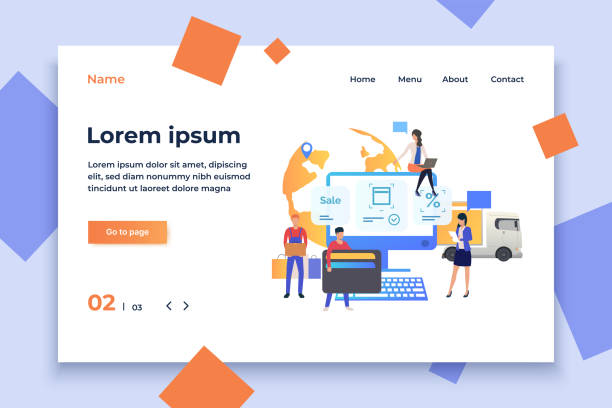
The process of secure website design is not a one-time event, but a continuous cycle of monitoring, updating, and auditing.
This news and analytical section addresses the importance of these ongoing measures.
Cyber threats are constantly evolving, and what is secure today might be a vulnerability tomorrow.
Therefore, performing regular security audits and continuous updates is crucial for maintaining your website’s security.
Security audits include Penetration Testing, vulnerability scanning, and reviewing security configurations, performed by security experts or automated tools.
These processes help identify unknown weaknesses and security loopholes before hackers discover them.
Software updates, including server operating systems, Content Management Systems (CMS), plugins, and code libraries, must also be performed regularly to ensure that any known vulnerabilities in them are addressed.
Recent news in the field of cyberattacks indicates that many breaches have occurred due to a lack of software updates and security patches.
This proactive approach and continuous approach is the foundation of a truly secure website.
Best Practices for User Authentication and Access Management

One of the main pillars in secure website design is the correct implementation of Identity and Access Management (IAM) systems.
This specialized and guiding section elaborates on best practices in this area.
Strong authentication ensures that only authorized users can access your website, while access management defines which resources each user can access.
The use of Multi-Factor Authentication (MFA), such as combining a password with a code sent to a mobile phone, is highly recommended to keep the user account secure even if the password is compromised.
Furthermore, passwords should be strong and unique, and users should be encouraged to use complex passwords.
Implementing account lockout policies after multiple failed login attempts and using strong hashing algorithms for storing passwords (like BCrypt or Argon2) are other essential measures.
Session Management must also be handled carefully; sessions should have an expiration time and automatically terminate after user logout or prolonged inactivity to prevent session hijacking.
| Authentication Method | Advantages | Potential Disadvantages |
|---|---|---|
| Simple Password | Simplicity in implementation and use | High vulnerability to Brute Force and Dictionary Attacks |
| Strong Password (containing special characters, numbers, uppercase and lowercase letters) | Greater resistance to attacks | May be harder for users to remember |
| Two-Factor Authentication (2FA) | Significant increase in user account security even if password is compromised | Requires a second device (mobile phone) for the user |
| Biometric Authentication (fingerprint, facial recognition) | High convenience and high security | Requires specific hardware and concerns related to privacy |
Data Encryption and User Privacy Protection
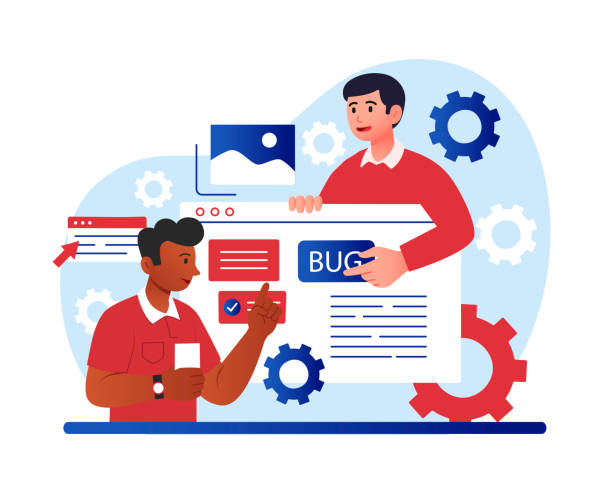
Within the framework of secure website design, data encryption and user privacy protection are of particular importance.
This explanatory and educational section addresses various aspects of this topic.
Data needs protection in two main states: Data in Transit and Data at Rest.
For data in transit, as previously mentioned, the use of SSL/TLS protocols is vital.
However, for data at rest, stored in databases, servers, and storage devices, appropriate encryption methods must be used.
This includes encrypting sensitive columns in databases, full disk encryption, or using encryption key management systems.
Adherence to privacy regulations such as GDPR (General Data Protection Regulation) or CCPA (California Consumer Privacy Act) is not only legally required but also significantly helps in maintaining user trust.
The website must clearly define its privacy policies and inform users about how their information is collected, used, and stored.
User information security is a sign of your commitment to ethical and professional principles and contributes to the long-term stability of the website.
Are you tired of your e-commerce site having visitors but no sales? Rasawab solves your core problem with professional e-commerce website design!
✅ Significant sales increase with targeted design
✅ Flawless user experience for your customers
⚡ Get a free consultation!
Incident Response and Disaster Recovery Planning
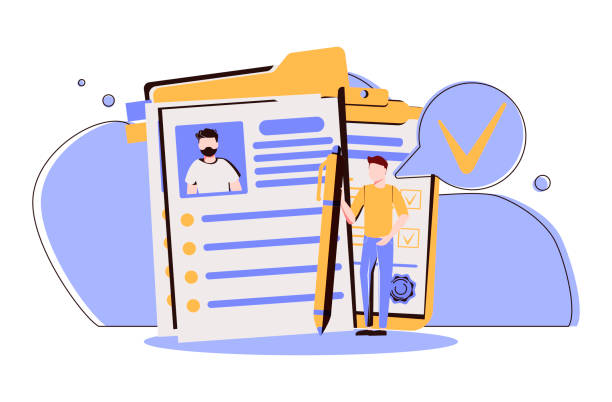
Even with the best secure website design approaches, no system is 100% impenetrable.
Therefore, having a well-documented plan for Incident Response and Disaster Recovery is essential for website security.
This specialized and guiding section addresses the importance of these plans.
An incident response plan includes steps that an organization must take in the event of a cyberattack or security breach.
These steps include incident identification, containment, threat eradication, system recovery, and finally, learning from the incident to prevent its recurrence in the future.
A disaster recovery plan focuses on ensuring business continuity after catastrophic events (such as server failure, data loss, or natural disasters).
This includes planning for regular data backups, storing backups in secure and remote locations, and continuous testing of recovery processes.
Having these plans not only helps you react faster if a problem occurs but also demonstrates your professionalism and readiness in facing security challenges.
Website stability depends on these preparations.
The Future of Web Security and Emerging Threats in the Digital World

The discussion of secure website design is not a static field and is constantly evolving.
This analytical, engaging, and thought-provoking section explores the future landscape of web security and emerging threats.
With the advancement of technologies such as artificial intelligence, machine learning, and quantum computing, attack methods are also becoming more complex and intelligent.
Are we ready to counter attacks driven by artificial intelligence? How can we secure websites against quantum attacks capable of breaking current encryptions? These questions pose significant challenges for the cybersecurity community.
The rise of the Internet of Things (IoT) and the proliferation of connected devices have also significantly expanded the attack surface.
Websites in the future must be able to interact securely with these devices.
Furthermore, threats related to Deepfake and fake digital identities can severely impact user trust in the online space.
Secure web development in the future requires continuous innovation, international cooperation, and increased investment in research and development.
The challenges are great, but the opportunities for innovation to build a more secure web are also countless.
How can we use technology to protect ourselves from technology? This is a question that future generations must answer.
Frequently Asked Questions
| No. | Question | Answer |
|---|---|---|
| 1 | What does secure website design mean? | Secure website design refers to a set of measures and methods employed to protect a website against cyberattacks, unauthorized access, data breaches, and other security threats. Its goal is to maintain the confidentiality, integrity, and availability of information. |
| 2 | Why is website security important? | Website security is crucial for maintaining user trust, protecting sensitive information (such as personal and financial data), preventing financial losses, preserving brand reputation, and complying with legal regulations (such as GDPR). A security breach can lead to customer loss and heavy penalties. |
| 3 | What are some of the most common security attacks against websites? | Common attacks include SQL Injection, XSS (Cross-Site Scripting), CSRF (Cross-Site Request Forgery), Brute Force, DDoS attacks, Broken Authentication, and Missing Function Level Access Control. |
| 4 | What is the role of an SSL/TLS certificate in website security? | An SSL/TLS certificate (which results in an HTTPS address) is used to encrypt data exchanged between the user and the website server. This prevents eavesdropping or tampering with sensitive information such as passwords and credit card details during transmission and verifies the website’s authenticity. |
| 5 | How can SQL Injection attacks be prevented? | To prevent SQL Injection, Prepared Statements or ORM (Object-Relational Mapping) with validated parameters should be used. Additionally, rigorous filtering and validation of user inputs (Input Validation) and applying the principle of least privilege in the database are essential. |
| 6 | What is HTTP Strict Transport Security (HSTS) protocol and how does it help security? | HSTS is a web security policy that instructs browsers to load the website only through an HTTPS connection, even if the user enters the address with HTTP. This prevents downgrade attacks and cookie hijacking on public Wi-Fi networks. |
| 7 | What is the importance of regular software and plugin updates in website security? | Regular updates of the Content Management System (CMS), plugins, themes, and other software components of the site are crucial for addressing discovered security vulnerabilities. Developers continuously release security patches, and not updating can leave the site vulnerable to known attacks. |
| 8 | What measures can be taken to enhance the security of the website administration section (admin panel)? | Changing the default admin panel path, using strong passwords and two-factor authentication (2FA), restricting access to specific IPs, using CAPTCHA on login pages, monitoring logs, and continuous CMS updates are among these measures. |
| 9 | Why is filtering and validating user inputs (Input Validation) important? | Filtering and validating inputs helps prevent the injection of malicious code or unauthorized data through forms, URLs, or other user input areas. This prevents attacks like XSS and SQL Injection, which exploit invalid inputs. |
| 10 | Name some common tools or services for checking and increasing website security. | Tools such as Web Application Firewall (WAF), vulnerability scanners (e.g., Acunetix, Nessus), Intrusion Detection and Prevention Systems (IDS/IPS), CDN services with security features (e.g., Cloudflare), and periodic Penetration Testing can enhance website security. |
And other services of Rasawab Advertising Agency in the field of advertising
Smart Content Strategy: A professional solution for increasing click-through rates with a focus on SEO-driven content strategy.
Smart Conversion Rate Optimization: A fast and efficient solution for online growth focusing on Google Ads management.
Smart Brand Identity: A novel service for enhancing customer behavior analysis through the use of real data.
Smart Advertorial: Professional optimization for customer behavior analysis using marketing automation.
Smart Brand Identity: A combination of creativity and technology to increase click-through rates by customizing user experience.
And hundreds of other services in the field of internet advertising, advertising consultation, and organizational solutions
Internet Advertising | Advertising Strategy | Advertorial
Resources
Website Security with SSL
Complete WAF Guide
Secure Coding Principles
Website Penetration Testing
? Rasawab Digital Marketing Agency, specializes in providing innovative solutions including secure website design and SEO optimization for the sustainable growth of your business.
📍 Tehran, Mirdamad Street, next to Bank Markazi, Kazerun Jonubi Alley, Ramin Alley, No. 6



